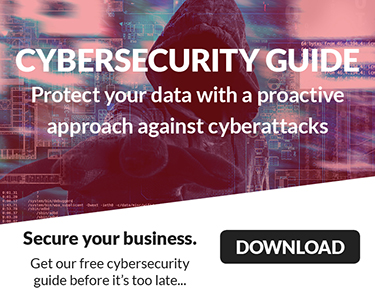Secure Yourself with Zero Trust Security
The digital world is under siege. Verizon’s 2024 Data Breach Report shows over 10,000 confirmed breaches in just seven months, highlighting the growing cybersecurity risks businesses face. Hackers are getting smarter, and it’s clear: we can’t afford to be passive.
Enter zero trust—a powerful security model that’s shaking up traditional defenses. Unlike older models that trust users and devices once inside the network, zero trust operates on a strict “never trust, always verify” philosophy. It continuously validates every user, device, and connection, ensuring only authorized access.
By shrinking your exposure to potential breaches, zero trust becomes a critical shield against modern cyber threats. But how does it work? To understand its full impact, let’s first dive into the concept of your organization’s attack surface.
Your Attack Surface
Your attack surface is the sum of all entry points hackers can exploit within your organization. This includes every device or system connected to your network—computers, laptops, servers, IoT devices, and more.
For instance, a small office with just a few devices has a relatively small attack surface, while a larger organization with remote workers, cloud infrastructure, and multiple endpoints faces a much larger and more complex attack surface.
This is where zero trust shines. It breaks your attack surface into smaller, more manageable segments, reducing vulnerabilities and making them easier to secure.
Next, let’s dive into how zero trust works to protect your organization.
What is Zero trust?
Zero trust, coined by cybersecurity expert John Kindervag, is built on a simple yet powerful principle: “Never trust, always verify.”
Unlike traditional security models that trust users once inside the network, zero trust requires continuous verification of all users, devices, and connections—both inside and outside the organization. Every access request, whether for applications, data, or systems, is subject to strict authentication, authorization, and ongoing validation.
Even users already logged in are not exempt; trust is never automatic. This rigorous approach incorporates antivirus, encryption, and endpoint management to minimize an organization’s attack surface and protect valuable assets.
In short, zero trust is a no-compromise security model designed to safeguard your network.
Why Zero trust?
The rise of remote work and digital tools during the COVID-19 pandemic forced businesses to rethink security. In response, President Biden mandated in 2021 that all federal agencies adopt zero trust policies, following the NIST 800-207 framework.
As cyber threats grow more sophisticated, businesses face increasing risks from larger attack surfaces, particularly with remote work and cloud technologies. A prime example is the Colonial Pipeline hack, where a compromised VPN connection allowed hackers to steal 100GB of data.
Zero trust combats these risks by continuously validating every user, device, and connection, regardless of location, shrinking the attack surface and strengthening defenses. Let’s dive into the core principles behind zero trust security.
The Pillars of Zero trust
While zero trust is evolving, its key principles provide a strong foundation for a robust security strategy that minimizes risk and protects sensitive data.
- Assume Breach Mindset
Zero trust operates on the belief that the network is already compromised. Every connection, device, and application is treated as potentially hostile. This proactive stance requires constant verification and validation of activity to prevent breaches.
- Continuous Monitoring and Validation
Zero trust demands continuous user and device verification. Users must authenticate before gaining access, and existing connections are periodically re-verified. This ensures that only authorized users access critical systems at all times.
- Least Privilege Access
Access is granted based on the principle of “least privilege.” Users receive only the minimum permissions necessary for their roles, limiting the scope of potential damage if an account is compromised.
- Device Access Control
Only authorized devices are permitted to connect to the network. This is critical in the age of remote work and IoT, where unauthorized devices could pose significant security risks.
- Microsegmentation
Zero trust limits lateral movement by dividing the network into smaller segments. If a breach occurs, hackers are confined to one segment, making it easier to detect and contain threats.
By embracing these principles, zero trust minimizes attack surfaces and strengthens defenses against evolving cyber threats.
Do You Really Need Zero trust?
Zero trust offers unmatched, proactive security that minimizes your attack surface and strengthens defenses. But let’s face it: the constant login prompts and extra authentication steps can be a hassle. For many small to medium-sized businesses (SMBs), the idea of implementing zero trust might feel inconvenient.
So, do you really need it?
While it’s not necessary for every business, we highly recommend considering zero trust, especially if you handle sensitive data or have a large remote workforce. Industries like healthcare, finance, or any organization with valuable or private information will benefit the most. With the growing reliance on digital tools and remote work, top-tier security is essential to stay ahead of hackers.
According to Okta’s 2023 State of zero trust report, 61% of global organizations have already implemented zero trust—showing it’s becoming a standard in cybersecurity.
Trust in Zero trust
Unsure if zero trust is right for you? Take a hard look at your current security. If you don’t think it’s necessary, start small—secure your critical assets first and gradually expand. It’s a journey, but one that will significantly reduce vulnerabilities and strengthen your defenses.
Need help? Reach out to Cyberplex Technologies LLC today!



